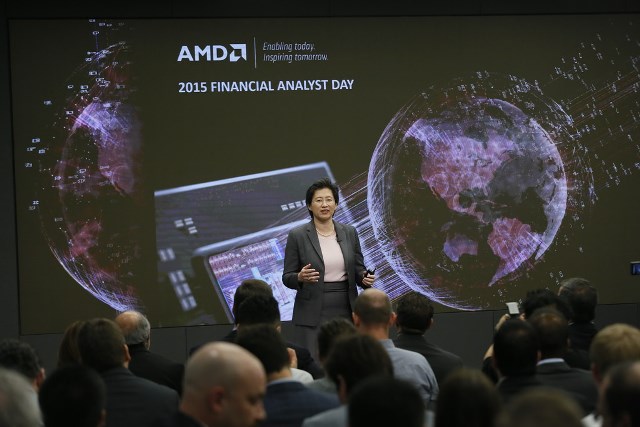AMD provided details on the company’s multi-year strategy to drive profitable growth based on delivering next-generation technologies powering a broad set of high-performance, differentiated products across the key areas of gaming, immersive platforms, and the datacenter.
AMD showcased a number of engineering innovations at the event, including details on its next-generation 64-bit x86 and ARM processor cores, future graphics cores expected to deliver a 2x performance-per-watt improvement compared to current generation offerings , and breakthrough modular design methodology that reduces system-on-chip (SoC) development costs and accelerates time to market.
Technology-related announcements included: Development of a brand new x86 processor core codenamed “Zen,” It features simultaneous multi-threading (SMT) for higher throughput and a new cache subsystem; Updates on the company’s first custom 64-bit ARM core, “K12” core. These enterprise-class 64-bit ARM cores are designed for efficiency and are ideally suited for server and embedded workloads; and AMD’s plans to extend its graphics technology leadership by offering the first high-performance graphics processing unit (GPU) in the industry featuring die stacked High Bandwidth Memory (HBM) using a 2.5D silicon interposer design. AMD plans to introduce this innovative packaging solution this year with its latest GPU.
In addition to discussing software, security, and other key platform enablers, AMD highlighted its new high-performance network-on-chip (NoC) technology, a modular design approach that leverages re-usable IP building blocks to maximize design efficiency. This breakthrough design approach is expected to lower cost and time-to-market for both AMD’s standard and future semi-custom products.
Additionally, AMD announced updates to its Computing and Graphics (CG) product roadmaps for accelerated processing unit (APU), central processing unit (CPU), and GPU products planned for introduction in 2016 and beyond. The upcoming products address key customer priorities, including increased performance, longer battery life, and improved energy efficiency. AMD also provided further details and publicly demonstrated its 6th Generation A-Series APU, formerly codenamed “Carrizo,” as well as its next-generation GPU offerings launching in the coming months.
AMD detailed the long-term strategy for its Enterprise, Embedded and Semi-Custom Business Group (EESC) to grow across a number of high-priority markets based on leveraging high-performance CPU and GPU cores that allow customers to build differentiated solutions. The near-term will bring continued focus on enabling scalable, semi-custom solutions and growth in the embedded pipeline. Looking ahead, next-generation “Zen” and “K12” cores will bring high performance to the datacenter, a space where AMD plans to regain share with a portfolio that includes x86 and ARM processors, increased power efficiency, and a renewed presence in the high-performance x86 server market.












